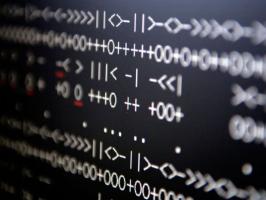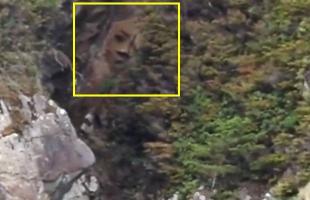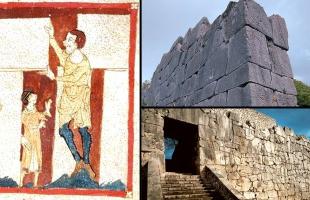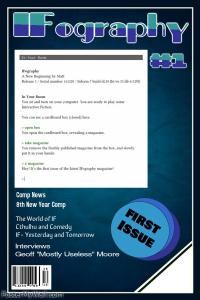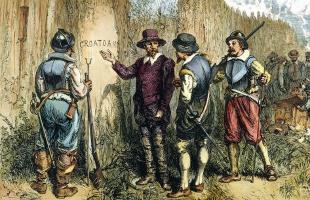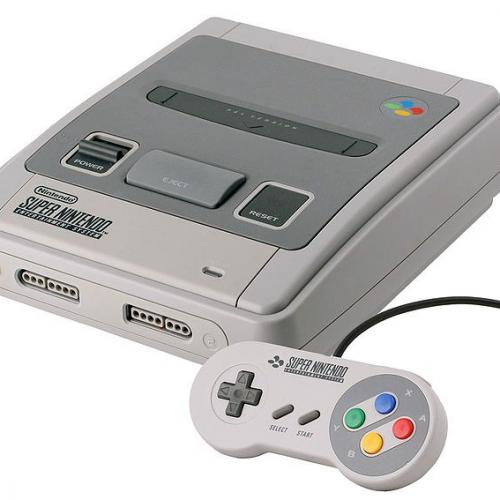Copy Link
Add to Bookmark
Report
The Basix Fanzine issue 10

______________________________________________________________________________
The Basix Fanzine Issue 10 - April 1998
editor: Alex Warren
email: basix@dewarr.globalnet.co.uk
www: http://come.to/axe/basix
______________________________________________________________________________
Hello, good evening and welcome to issue 10, and a (very late) happy new year
to you all. Sorry for the lateness of this issue, I've been busy with school
work and also contributions have been a bit thin on the ground and I thought
it better to wait until I had enough rather than release the tiniest fanzine
ever. In a vain attempt to add more information, I've taken a few newsgroup
articles which may be of interest and have stuck them in as well. Enjoy...
-CONTENTS---------------------------------------------------------------------
Levels are represented by B, I or A for Beginner, Intermediate and Advanced
respectively, or a combination. They aren't clear-cut definitions though, so
you might find something useful labelled (B) even though you've been
programming for 10 years, for example. Unless otherwise stated, the articles
apply to all major breeds of BASIC.
NEWS:
- POWERBASIC 3.5
- BASIX ARTICLE READER
ARTICLES:
- TIMING by Jakob Krarup (B)
- CUSTOMIZED FONTS by Jakob Krarup (I/A)
- FRACTAL DIMENSIONS by Razvan Caracas (A)
- GRAPHICS IN QBASIC TUTORIAL (PART 1) by "Hacker" aka Damian Nikodem (I)
- MAKING LIBRARIES by Alan Copeland (not QBasic) (ALL)
PROGRAMS:
- 4DD.BAS by "Anna"
- NEWTIMER.BAS by "Hacker" aka Damian Nikodem
FROM THE NEWSGROUPS:
- FOR THOSE OF YOU INTERESTED IN BASIC COMPILERS from John D. Morrison
- READING TWO KEYS from CadWright
- DETERMINE HOME DIRECTORY from Christy Gemmell
- fINPUT FOR QB from Don Schullian
LETTERS:
- FANZINE TEXT FORMAT, from Bart Veerman
INTERNET RESOURCES:
- Getting the Fanzine
- Websites
- Mailing List
- Useful BASIC Websites
- Useful BASIC Newsgroups
- BASIC Compilers
FINAL WORDS
-NEWS-------------------------------------------------------------------------
*** POWERBASIC 3.5 ***********************************************************
Look, there's a new version of PowerBasic out... see www.powerbasic.com for
more details.
Unfortunately there's still no 100% compatibility with QB. Dave Navarro
claimed in a recent post to alt.lang.basic that:
"The fact of the matter is that less than 400 people in the history of our
company have requested 100% compatibility with QuickBasic. Our market
surveys show that what QuickBasic programmers want is not syntax
compatiblity, but IDE compatiblity.
The next major upgrade of the DOS compiler will include a complete
re-write of the IDE which will incorporate many features which have been
requested by QuickBasic programmers."
So there you have it. PB costs $110 I think... (not a very well-researched
article was it? <g> )
*** BASIX ARTICLE READER *****************************************************
If you find reading this magazine as a text file a total pain, you can now
read the various articles in a handy reader, programmed by Jakob Krarup. It's
available for download at http://come.to/axe/basix.
Features include the ability to extract BASIC code from an article and mouse
support. Coming soon will be support for searching, making reading the Basix
Fanzine easier than ever.
-ARTICLES---------------------------------------------------------------------
*** TIMING, by Jakob Krarup (Jake@post5.tele.dk) *****************************
Hi I'm Jakob Krarup (Jake@post5.tele.dk), and I've been programming in QBASIC
around 5 years now. I was going to switch completely to Visual Basic when I
came across the BASIX Arcives on the net, and suddenly I knew - I was not
alone - it was cult to do the QB thing = )
So I downloaded the nine issues of BASIX and read them thoroughly over and
over, and my programs started improving drastically. So now I'd like to put
something back into the newzine, since I've gotten so much from it.
A lot of programs I find on the net use the FOR...NEXT loop to pause the game
by merely counting, and then the programmer has added a comment along the
lines: "'alter this if the program runs too slow/fast".
There is a better way, which doesn't change speed according to the speed of
the computer.
Of course we could use the SLEEP command, but since most of the delays we're
talking about are all below one second, this will not do.
I usually store the timer in a variable of type single and then do a loop
while the difference between the starting time and the current time hasn't
passed the desired delay.
Like this:
Delay! = 0.5 'Set the delay (change the value to the desired length)
StartingTime! = TIMER 'Store the starting time
DO 'keep checking whether
LOOP WHILE TIMER - StartingTime! < Delay! 'enough time has passed.
This can easily be changed into a SUB:
SUB DELAY (Delay!)
StartingTime! = TIMER 'Store the starting time
DO 'keep checking whether
LOOP WHILE TIMER - StartingTime! < Delay! 'enough time has passed.
END SUB
This way you could just write
Delay .5
in your code - and the sub takes care of the rest as simple as that.
*** CUSTOMIZED FONTS, also by Jakob Krarup... ********************************
One of the things I've noticed on the net is that a lot of people see you as a
low- or medium skilled Basic programmer until you have your own font in your
programs.
Well - after reading Alex Warren's article on binary numbers in BASIX issue 9
I decided to make one myself. If you don't feel at home in the binary numbers,
please read Warren's article again before continuing.
Truth to tell, I had already made a font editor that allowed you to draw a 6x8
pixels font, but the way I stored it was *very* simple (don't laugh!).
The fontfile itself was opened with:
OPEN "filename.ext" FOR OUTPUT AS #1
and then every pixel was written to the file as an integer (0 or 1) using the
command:
PRINT #1, ...
this resulted in each pixel in the font taking up three bytes instead of one
bit because PRINT #1 writes a string to the filenumber indicated and finishes
it off with two ascii signs CR and LF. CR (ASCII value 13) is a 'Carriage
Return' which means: go to the beginning of the line again, and LF (ASCII
value 10) is a 'Line Feed' which means: go down a line.
All these two values do is is to put the cursor on the next line, back at the
left margin.
Anyway, with 140 characters in the font, each character with 6x8 (48) pixels,
and each of these written in a byte followed by the two CR + LF bytes - this
would mean a whopping:
140 x 6 x 8 x 3 bytes = 20,160 bytes or more than 20 Kb for the font. If I
could put this into a bit per pixel, it would mean 140 x 6 x 8 bits = 6,720
bits / 8 = 840 bytes or only 4.2 percent of the original. This I had to work
on!
Okay - to begin with, I had a pretty good way of numbering the characters in
my font, because I simply used the ASCII character number 33 (the exclamation
point) as my first letter, and then ended up with ASCII value 172 (the 1/4 or
one quarter sign) as the last letter. That way I could deduct 33 from the
ASCII value of a letter the program was to write and index the values in the
font array. I skipped the first 32 characters as most of them are unprintable
anyway - look at the ASCII table in the BASIC helpfile for yourself.
While I was still editing the font, each bit would have an integer value that
determined whether there would be a pixel or not. So in memory the font would
be dimensioned
DIM Font% (140, 6, 8)
and since there wasn't need for much more memory this was the easiest, instead
of encoding and decoding to and from binary while editing.
My font looked like this bitwise:
(Capital A)
0 1 2 3 4 5 Columns
Rows
0 0 0 1 0 0 0
1 0 1 0 1 0 0
2 1 0 0 0 1 0
3 1 1 1 1 1 0
4 1 0 0 0 1 0
5 1 0 0 0 1 0
6 0 0 0 0 0 0
7 0 0 0 0 0 0
And to encode them from the Font% array to the binary mode I'd do it one
column at a time, top down, by multiplying the digits with 2 to the power of
the row they are in.
So the columns would look like this: (remember it's top down)
Column 0 Column 1 Column 2
0 * 2^0 = 0 0 * 2^0 = 0 1 * 2^0 = 1
0 * 2^1 = 0 1 * 2^1 = 2 0 * 2^1 = 0
1 * 2^2 = 4 0 * 2^2 = 0 0 * 2^2 = 0
1 * 2^3 = 8 1 * 2^3 = 8 1 * 2^3 = 8
1 * 2^4 = 16 0 * 2^4 = 0 0 * 2^4 = 0
1 * 2^5 = 32 0 * 2^5 = 0 0 * 2^5 = 0
0 * 2^6 = 0 0 * 2^6 = 0 0 * 2^6 = 0
+ 0 * 2^7 = 0 + 0 * 2^7 = 0 + 0 * 2^7 = 0
---------------- ---------------- ----------------
= 60 = 10 = 9
================ ================ ================
and so on...
The fontstoring array would be dimensioned:
DIM FontArray AS STRING * 840 '140 letters with 6 columns each
and I'd then store the ASCII values in a string array using the chr$(ASCII
code). That way the six first bytes were the first letter, the six next were
the second etc.
Then I could save the font using the BINARY format:
OPEN "filename.ext" FOR BINARY AS #1
PUT #1, 1, FontArray
CLOSE #1
Easy - huh?
I could load the font file the same way
OPEN "filename.ext" FOR BINARY AS #1
GET #1, 1, FontArray
CLOSE #1
and then write them to the screen using PSET.
The writing algorithm would look up the letter, and check each bit by AND'ing
with 2 to the power of the pixel position in the column.
Text$ = "Hi there!"
SCREEN 13 'go into graphics mode
Xmargin% = 100 'Where should writing begin on screen
Ymargin% = 50
ColorDesired% = 14 'here we are writing with yellow
FOR Letter% = 1 TO LEN(Text$) 'We check each letter in the text.
AsciiValue% = ASC(MID$(Tekst, Letter%, 1)) - 33 'First we find the ASCII
value and subtract 33
'to find the first byte
(column) in the letter
IF AsciiValue% >= 0 AND AsciiValue% <= 140 THEN 'and see if it's in the font
FOR X% = 0 TO 5 'Checks the Columns
FOR Y% = 0 TO 7 'Checks the rows
IF ASC(FontArray (AsciiValue% * 6 + X%)) AND 2^Y THEN 'We AND the
column byte with 2^row
PSET (Xmargin% + (Letter% - 1) * 6 + X%, Ymargin% + Y%),
ColorDesired%
ENDIF
NEXT Y%
NEXT X%
END IF
NEXT Letter%
Unfortunately this is rather slow on older machines - and you can actually see
the font being written. So I made a look-up-table of all the values 0 - 7
squared and used that when AND'ing instead of doing math every time a pixel
was set. The table is dimensioned and initiated like this:
DIM LookUpTable(8) as INTEGER
FOR Counter% = 0 to 7
LookUpTable(Counter%) = 2^Counter% 'generates the numbers 1, 2, 4, 8, ...
128
NEXT Counter%
The center three lines in the fontdrawing algorithm would look like this then:
IF ASC(FontArray (AsciiValue% * 6 + X%)) AND LookUpTable(Y) THEN
PSET (Xmargin% + (Letter% - 1) * 6 + X%, Ymargin% + Y%), ColorDesired%
ENDIF
This speeds up the drawing quite a bit on math-weak machines.
Finally - make the font drawing routine into a sub by all means and just pass
along X and Y coordinates, the string to be printed and a color.
SUB Write (Xmargin%, Ymargin%, Text$, ColorDesired%)
FOR Letter% = 1 TO LEN(Text$) 'We check each letter in the
text.
AsciiValue% = ASC(MID$(Tekst$, Letter%, 1)) - 33 'First we find the
ASCII value
IF AsciiValue% >= 0 AND AsciiValue% <= 140 THEN 'then see if it's in the font
FOR X% = 0 TO 5 'Check each column
FOR Y% = 0 TO 7 'Check each row
IF ASC(FontArray (AsciiValue% * 6 + X%)) AND 2^Y% THEN
PSET (Xmargin% + (Letter% - 1) * 6 + X%, Ymargin% + Y%),
ColorDesired%
ENDIF
NEXT Y%
NEXT X%
END IF
NEXT Letter%
END SUB
Hope you can use this information in making your own fonts!
Jakob Krarup - Jake@post5.tele.dk.
*** FRACTAL DIMENSIONS, by Razvan Caracas (catmin@math.math.unibuc.ro) *******
Dear Sir,
I have seen that you are preparing an electronic journal about BASIC
programming and consequently I have sent you a small programm whose purpose is
to calculate fractal dimensions of linear signals.
Yours sincerely,
Razvan Caracas
Bucharest University,
Faculty of Geology,
Mineralogy Department,
1, N Balcescu ave
70111 Bucharest
Romania
e-mail: catmin@math.math.unibuc.ro
Linear singals fractal analysis
The programm performs a fractal analysis of linear signals. It calculates the
fractal dimension on the basis of a sampling function.
The sampling function is: Y(n,l)(x) = ABS( f(x + l * dt) - f(x) ) ^ n, where n
is a real constant, l is a real variable, x is the sampling point where the
f(x) signal has been recorded.
The average of the function Y(n,l)(x) over the range xmin - xmax gives the
function: A(n,l). Then the A(n,l) power-law dependence of l is checked:
A(n,l) = w * l ^ D,
where w is a parameter. For n = 2 the exponent D is the real dimension of the
signal.
The input file is an ASCII file describing the signal values f(x) at each
point x.
The output consists of the fractal dimension, the exponent D, and an ASCII
file with the logarithms of A(n,l) and l value, respectively.
INPUT "Input file name: ", infile$
INPUT "Output file name: ", outfile$
INPUT "Sampling rate: ", dt
INPUT "Power: ", n
'input data module
OPEN infile$ FOR INPUT AS #1
DO WHILE NOT EOF(1)
INPUT #1, a, b
nrdata = nrdata + 1
LOOP
CLOSE
REDIM indata(nrdata, 2)
OPEN infile$ FOR INPUT AS #1
FOR i = 1 TO nrdata
INPUT #1, indata(i, 1), indata(i, 2)
indata(i, 1) = i
NEXT
CLOSE
'calculation module
lmax = INT(nrdata / dt) - 1
REDIM s(lmax, 2)
REDIM lns(lmax, 2)
FOR l = 1 TO lmax - 1
x = 0
suma = 0
DO WHILE x + l * dt < nrdata - dt
x = x + 1
suma = suma + ABS(indata(x + l * dt, 2) - indata(x, 2)) ^ n
LOOP
s(l, 1) = l
s(l, 2) = suma / x
lns(l, 1) = LOG(l)
lns(l, 2) = LOG(suma / x)
NEXT
'output module
OPEN outfile$ FOR APPEND AS #1
FOR i = 1 TO lmax
PRINT #1, lns(i, 1), lns(i, 2)
NEXT
'fit module
FOR i = 1 TO lmax
s1 = s1 + lns(i, 2)
s2 = s2 + lns(i, 1)
s3 = s3 + lns(i, 1) * lns(i, 2)
s4 = s4 + lns(i, 1) ^ 2
NEXT
IF s4 = s2 ^ 2 THEN
PRINT "Fractal dimension infinite"
ELSE
m = (s1 - s2 * s3) / (s4 - s2 ^ 2)
PRINT "Fractal dimension is : ", ABS(m)
END IF
*** GRAPHICS IN QBASIC TUTORIAL (PART 1) *************************************
by "Hacker" aka Damian Nikodem (Hacker@alphalink.com.au) *********************
Intro:
I am assuming that you HAVE some experience in basic programing. If you dont
then dont bug me with a &H7FFF (32767) E-mail messages about what is a
integer.
Now in this tutorial I will show you how to load(and understand!) many image
formats, speed up nearly ALL of your graphics routines, and nearly any other
aspect of graphics in BASIC. Now onto the tutorial!
Palette:
The palette is a series of numbers where the values of the colors is kept.
Or in other words if you change the palette you can change the colors in a
image. So if you want to draw a green gradient in Vga mode 13h (screen 13)
you would have to change the palette because there isnt enough green's in the
existing palette.
Now you may be thinking that this is hard to do but in reality it is EXTREMELY
easy. In fact it can be done in just 4 commands:
' start CODE
OUT &H3C8, col
OUT &H3C9, red
OUT &H3C9, green
OUT &H3C9, blue
' end CODE
Now, the value that should be inside `col' is the color that you want to
change, the value in `red' it the ammount of RED you want in the color you
want to change,`green' and `blue' are the same execpt that they are diffrent
colours. The color values CAN'T be over 63 or it will have some intresting
errors. This code can be cycled incrementing one or more values to produce
some cool effects (red flashing screen)or this can be used just once to load a
image with diffrent colors.
Now there is a way to save and read palette's quickly and it has (nearly)
become a standard ammong basic programers here is the sub routines to load and
save the .PAL files
' start CODE
SUB file2pal (file$)
OPEN file$ FOR BINARY AS #1
r$ = " "
g$ = " "
b$ = " "
FOR x% = 0 TO 255
GET #1, , r$: r% = ASC(r$)
GET #1, , g$: g% = ASC(g$)
GET #1, , b$: b% = ASC(b$)
CALL pal(x%, r%, g%, b%)
NEXT x%
END SUB
SUB getpal (Colour%, Red%, Green%, Blue%)
OUT &H3C7, Colour%
Red% = INP(&H3C9)
Green% = INP(&H3C9)
Blue% = INP(&H3C9)
END SUB
SUB pal (Colour%, Red%, Green%, Blue%)
OUT &H3C8, Colour%
OUT &H3C9, Red%
OUT &H3C9, Green%
OUT &H3C9, Blue%
END SUB
SUB pal2file (file$)
OPEN file$ FOR OUTPUT AS #1
FOR x% = 0 TO 255
CALL getpal(x%, r%, g%, b%)
PRINT #1, CHR$(r%); CHR$(g%); CHR$(b%);
NEXT x%
CLOSE #1
END SUB
'end CODE
Now it is simple to use these routines just add
pal2file ("palette.pal")
to your code to send a copy of the palette to a file called `palette.pal'
and to load a saved palette you just use
file2pal ("palette.pal")
to load palette.pal
now that you understand this i'll go onto a FAST routine
Fast Graphics:
Have you notaiced that PSET is very slow! well you can do the same job by
writing to memory execpt it is a LOT faster
here is a small bit of code that writes color 30 to a (10,10)
'start CODE
screen 13
def seg= &HA000 ' Tells the computer to point to video memory
x = 10 ' The X position of the pixel on the screen
y = 10 ' The Y position of the pixel on the screen
col = 30 ' The color of the pixel
poke (y*320) + x, col ' Puts the pixel on the screen
'end CODE
The math on the last line is quite simple. The screen is simple to understand
this is a small representation of the screen every box is one pixel and the
number inside that box is the memory address of the pixel
+------+------+------+------+------+------+...
| 01 | 02 | 02 | 04 | 05 | 06 |
+------+------+------+------+------+------+
| 321 | 322 | 323 | 324 | 325 | 326 |...
+------+------+------+------+------+------+
| 641 | 642 | 643 | 644 | 645 | 646 |...
+------+------+------+------+------+------+
. . . . . . .
. . . . . . .
. . . . . . .
because VGA mode 13h (screen 13) has 320 pixles on the horozontal axis we
multiply y by 320 to figure out which line to write and we add x to figure out
which column the pixel is!
In the next part I will teach you about the PCX format
(if alex is shocked how big that one is he will DIE :] when he sees the size
of the GIF tutorial [or .JPG if I have the time])
- Hacker (Hacker@alphalink.com.au)
Note: DO NOT E-MAIL ME ABOUT SPELLING MISTAKES OR ANY OTHER GRAMMER ERRORS
*** MAKING LIBRARIES, by Alan Copeland (HotDogBoy5@aol.com) ******************
You've heard all about them, seen them all over the internet, and you maybe
have even downloaded and used a couple. What are they? Libraries, of course!
A Library is an essential programming concept/techneqe that can and will make
programming easier, same lot of time, and make you code quicker, tighter, and
more organized. I'll try and explain how to make and use these facinating
things, and make it as painless as possible. Unfortanitly, you will need
Quickbasic 4.5, and not just the 1.1 that comes with DOS. Now that you have
the QB45, lets go. Before you can make librarys, you have to understand what
they are. In my little one horse town in the burbs of Philly, they just built
a new public library. It's nice and big, and very useful. Basicly, people
write books for all purposes, and put them in it. Then anyone can go right
in, quickly get the book they need, and leave. The smart people out there
might have guessed that this is the perfect analogy for a programming library.
It's a big file, and in it has a bunch of subroutines. You program delves
right into it, finds the subroutine it needs, uses it, and leaves. How is
aone of these better than subroutines in a regular program? I'll tell you,
just because I can make a bulleted list.
The subs are not in the main code, which keeps it smaller. By putting subs
into a library, you can easily find them and use them again for other programs
You can make renevue generating useful librarys to sell to other programers
Now that you know what one is, how do you use one? First, you need to get
one. Get onto any site with QB files, and they are bound to have a library of
mouse routines, or a Sound Blaster Library. Download one, and you should get
some files, which consist of file ending in .QBL, a file ending in .LIB, and
probably a Readme file. The QLB file is for writing and testing, and can be
used directly by the QB interpreter. The LIB file is for the compiler, so you
can compile your programs. The Readme file shouold contain a list of all the
routines, and how to use them.
Copy the QLB and LIB file into your QB directory, and start Qbasic with the
following syntax:
QB /L YOURLIBNAME.QLB
Qbasic should start up without a hitch, but not flash the opeing screen. When
you browse around, you should notice nothing differnt. Theres no subs in the
sun menu, no extra menus, no extra anything. Trust me, the routines are
there. But how to use them? Use the regular sub syntax. You can now start to
see how this can greatly influence program code. For example, say you had a
game, where when the user pressed the left key, it did all the stuff to run
left. Put all that in a library, with a routine named RUN, and have both
directions in there, pass argument to it, and you can now do it in one
statement by haveing the statement "...THEN CALL RUN(LEFT)". It looks better
than other things. So now that you know what they are, and you know how to
use them, your all pshyced up to go make one! Thats the spirit! Everyones
raring to go!
Making a library
I'm in the jazz band at my school. Our band director is named Mr. Baron. He
says lots of stuff, like "dude", "cool", "wimp-er-doodle", and "cheese and
crackers!". Lets say, hypotheticly, that I wanted to make a library that
could say the sounds of Mr. Baron when called apon. So lets start. Start QB
with no extra syntax, and make a new SUB called "dude". In it, type,
PRINT "Mr. Baron often says dude, Dude."
Make another SUB called "cool", and in it type
PRINT "Cool! Mr Baron says Cool alot!"
Make one more sub thats named "wimp". Type in it
PRINT "Don't be such a wimp-er-doodle when you play!"
Now go back to the main module. Make sure your subs work properly (they
should just display mesages), and save your program as BARON. Next, on the
RUN menu, there is a chioce that says Make library. Choose this, and in the
quicklibrary name box, type in BARON. The Library comiler should go crazy and
do its thing, and return you to your program. Congradulations! You've made a
librarry! Now exit QB, and start it with the syntax:
QB /L BARON.QLB MRB.BAS
In your new program, typein the following code:
DO
CLS
? "Barons Speech Menu!"
? "1. Say Cool!"
? "2. Say Dude!"
? "3. Say Wimp-er-doodle"
Input choice$
IF choice$ = "1" Then CALL cool
IF choice$ = "2" Then CALL dude
IF choice$ = "3" Then
CALL wimp
Else
Exit do
End if
LOOP
END
Save this, and test out the new "Baronisms menu". If everything works out,
then the menu should work totally perfect. You know know how to work
librarys, how to make them. Now was it as hard as you thought? Anyway, I
hope you had as much fun reading as I did writing this. Oh well. One final
note - If you plan to distribute your librarys, then make sure that you
include the LIB, the QLB, and a TXT file containg documentation on ALL the
routines. So start making librarys!
-PROGRAMS---------------------------------------------------------------------
*** 4DD.BAS, by "Anna" (q.dao@student.murdoch.edu.au) ************************
"Anna" [not the real name of this person, maybe he/she wants to remain
anonymous? :) -ed] writes:
...here is some basic code for that basic mag. It is a graphic demo.
[ed's note: you'll probably have word-wrapping trouble with the DRAW line -
make sure it's all in one big piece before running the program]
SCREEN 0, 0, 0: CLS : SCREEN 13: PALETTE 0, 5 * 65536: CL& = 65536 + 256
FOR X% = 1 TO 31: PALETTE X%, (X% MOD 64) * CL&: NEXT
FOR X% = 32 TO 63: PALETTE X%, (64 - (X% MOD 64)) * CL&: NEXT
FOR N% = 64 TO 127: PALETTE N%, (N% - 64) * 65536: NEXT
FOR Y% = 80 TO 199: C% = C% + 1
LINE (0, Y%)-(319, Y% + C%), (C% / 2) + 64: LINE (0, Y%)-(319, Y% + C% + 1),
(C% / 2) + 64
LINE (0, Y%)-(319, Y% + C% + 2), (C% / 2) + 64: LINE (0, Y%)-(319, Y% + C% +
3), (C% / 2) + 64
LINE (0, Y%)-(319, Y% + C% + 4), (C% / 2) + 64
NEXT
DRAW "bm160,90c255bl75u50r15d40r15u20r15d20r20d10l20d25l15u25l30br80bd25u75r35f20d35g20l35be15u45r15f10d25g10l15bm161,90c255bl75u50r15d40r15u20r15d20r20d10l20d25l15u25l30br80bd25u75r35f20d35g20l35be15u45r15f10d25g10l15bm162,90c255bl75u50r15d40r15u20r15d20r20d10l20d25l15u25l30br80bd25u75r35f20d35g20l35be15u45r15f10d25g10l15bm163,90c255bl75u50r15d40r15u20r15d20r20d10l20d25l15u25l30br80bd25u75r35f20d35g20l35be15u45r15f10d25g10l15"
PAINT (90, 70), 255: PAINT (173, 70), 255
FOR Y% = 40 TO 119: FOR X% = 80 TO 229
C% = C% + INT(RND * 3): c1% = POINT(X% + 1, Y% - 1): IF c1% > 63 THEN c1% = 0
C% = (c1% + C%) / 2: IF POINT(X%, Y%) = 255 THEN PSET (X%, Y%), C%
NEXT: NEXT
LOCATE 3, 13: COLOR 255: PRINT "4th Dimension"
FOR Y% = 13 TO 25: FOR X% = 90 TO 210: C% = C% + INT(RND * 3): c1% = POINT(X%
+ 1, Y% - 1): IF c1% > 63 THEN c1% = 0
C% = (c1% + C%) / 2: IF POINT(X%, Y%) = 255 THEN PSET (X%, Y%), C% + 10
NEXT: NEXT
*** NEWTIMER.BAS, by "Hacker" aka Damian Nikodem (Hacker@alphalink.com.au) ***
Hacker writes:
here is a small program that changes the pit clock's refresh rate
DECLARE SUB settimer (frequency!)
ON TIMER(1) GOSUB t1
TIMER ON
settimer (1000)
CLS
DO
LOOP UNTIL INKEY$ <> ""
settimer (1)
SYSTEM
t1:
z = z + 1
PRINT z
RETURN
SUB settimer (frequency)
Counter = &H1234DD / frequency
OUT &H43, &H34
OUT &H40, Counter MOD 256
OUT &H40, Counter / 256
END SUB
-FROM THE NEWSGROUPS----------------------------------------------------------
This is a new section where, basically, I put useful Usenet postings into the
fanzine. I hope you find them useful. Most of these have been reproduced here
with permission of the author.
*** FOR THOSE OF YOU INTERESTED IN BASIC COMPILERS ***************************
From: "John D. Morrison" <jdm1intxDIE_SPAMBOT_DIE@airmail.net>
Newsgroups: alt.lang.basic
Subject: For those of you interested in Basic Compilers.
Date: 1 Oct 1997 14:06:55 GMT
There are two new Basic compilers out, which have
been referred to several times in recent posts on
basic newsgroups.
They are GFA Basic, and OmniBasic. For curiousity
sake, I downloaded trial versions of both of them to check
out.
Both of them will create .EXE's, but OmniBasic requires
you to have DJGPP as well. It compiles your basic code
to low-level C code, which it then passes to DJGPP (Gnu C++)
to compile.
GFA Basic is somewhat simpler to use, and comes with
both an interpreter and a compiler. The only drawback
to the compiler is that it creates .EXE's which require a
run-time module, Ala Quick Basic.
Of the two, I'd recommend GFA basic for beginners,
simply because you don't need a separate C compiler
to use it. The interface is a little clunky, but it works,
and it does compile !
Of course, the trial versions both limit you somehow. Omni
Basic limits the size of the symbol table, which means
you can only have a limited number of variables. GFA Basic
limits you to 1000 lines of code per program. But for
a beginner, that should be enough to get started.
John Morrison
*** READING TWO KEYS *********************************************************
From: cadwright@aol.com (CadWright)
Newsgroups: alt.lang.basic
Subject: Re: **** reading two keys
Date: 7 Oct 1997 15:30:53 GMT
In article <01bcd23d$ad136a20$5a180ed0@bryan>, "roqu" <roqu@mindless.com>
writes:
>i need a way (exampe would be helpful) to read in 2 keys from the keyboard.
>for instance, how could i tell if the user is pressing (not on numeric pad)
>up arrow and at the same time left arrow, for diagonal purposes? i cant
>even remember how to do this in c, im pretty sure its input from the
>keyboard buffer at H60 and some arrays involved.
>anything would be of great help
You've just about got it, use INP to get which keys are being
pressed or released and use an array to hold the state of
the keys -
dim KeyArray(127) as integer
i = inp(&h60)
if i <128 then 'pressing a key
KeyArray(i) = -1
else 'releasing a key
KeyArray(i-127) = 0
end if
if KeyArray( 75 ) = -1 then 'pressing the left key
if KeyArray( 72 ) = -1 then 'pressing the up key
etc.
Hmm, I've just typed that from memory so it may not
be 100% correct :-)
TTfn,
Craig___
*** DETERMINING HOME DIRECTORY ***********************************************
From: christy.gemmell@islington-bbs.com (Christy Gemmell)
Newsgroups: alt.lang.basic
Subject: Determining 'home' directory
Date: Thu, 06 Nov 1997 14:03:00 GMT
mighty@coosavalley.net <Tim Rude> enquired...
TR> Does anyone know how to determine in QB 4.5 what directory
> a compiled .EXE program resides in when it is executed?
<snip>
Yes Tim, this program will do exactly that. Feel free to adapt it
for your own use. Be aware though that it only works as expected
in a compiled .EXE file. If you run it in the QuickBASIC IDE it
will return the path of QB.EXE *not* your source code file <g>
Christy
--- cut here ----------------------------------------------------------------
' PATHNAME.BAS reports the drive and directory path the current program
' has started up from and the name of the program itself.
'
' $INCLUDE: 'QB.BI'
'
DECLARE FUNCTION PathName$ (ProgName$)
DIM SHARED Regs AS RegType ' To hold register values
b$ = ""
a$ = PathName$(b$)
PRINT a$, b$
END
FUNCTION PathName$ (ProgName$)
Regs.ax = &H6200 ' DOS Service 98
INTERRUPT &H21, Regs, Regs ' - find PSP segment
DEF SEG = Regs.bx ' Segment of current program
EnvSeg& = PEEK(&H2C) + PEEK(&H2D) * 256& ' Get environment pointer
DEF SEG = EnvSeg& ' Environment segment
i% = 0 ' Shuffle
DO ' through
DO ' environment
ThisByte% = PEEK(i%) ' strings
i% = i% + 1 ' looking
LOOP WHILE ThisByte% ' for two
ThisByte% = PEEK(i%) ' successive
i% = i% + 1 ' null
LOOP WHILE ThisByte% ' bytes
i% = i% + 2 ' Skip over some junk
ProgName$ = "" ' To hold the program name
DO ' Read
ThisByte% = PEEK(i%) ' each
IF ThisByte% THEN ' character
ProgName$ = ProgName$ + CHR$(ThisByte%) ' of program
END IF ' name until
i% = i% + 1 ' we find
LOOP WHILE ThisByte% ' null byte
DEF SEG ' Restore default segment
l% = LEN(ProgName$) ' Did we find anything?
IF l% THEN ' If so
DO ' scan
c$ = MID$(ProgName$, l%, 1) ' backwards
IF c$ = "\" THEN EXIT DO ' looking
l% = l% - 1 ' for the
LOOP WHILE l% ' path
END IF ' delimiter
IF l% THEN ' Seperate
PathName$ = LEFT$(ProgName$, l%) ' directory
ProgName$ = MID$(ProgName$, l% + 1) ' path
ELSE ' from
PathName$ = "" ' program
END IF ' name
END FUNCTION
--- and here ----------------------------------------------------------------
* 1st 2.00 #323 * Father forgive me, for I have GOTOed.
*** fINPUT FOR QB ************************************************************
[Ed's note: It's a powerful input routine for QB, much better than that INPUT
command we're all used to.]
From: d83@ath.forthnet.gr (Don Schullian)
Newsgroups: alt.lang.basic,comp.lang.basic.misc
Subject: fInput for QB
Date: Fri, 26 Dec 1997 14:46:45 GMT
DECLARE FUNCTION fInput% (D$, Row%, Col%, VisLen%, MaxLen%, Mask$, Fgrnd%,Bgrnd%)
DECLARE FUNCTION fInsertKey% ()
DECLARE FUNCTION fGetKey% ()
CONST ENTERkey% = &HD
CONST ESCkey% = &H1B
CONST LEFTkey% = &H4B00
CONST RIGHTkey% = &H4D00
CONST HOMEkey% = &H4700
CONST ENDkey% = &H4F00
CONST BkSPCkey% = &H8
CONST DELkey% = &H5300
CONST INSkey% = &H5200
CLS
B$ = "This is a test"
Exet% = fInput%(A$, 10, 10, 5, 5, "0123456789 ", 0, 7)
Exet% = fInput%(B$, 11, 10, 30, 50, "", 0, 7)
Exet% = fInput%(C$, 12, 10, 1, 1, "YyNn", 0, 7)
LOCATE 1, 1
PRINT ">>"; A$; "<<"
PRINT ">>"; B$; "<<"
PRINT ">>"; C$; "<<"
FUNCTION fGetKey%
DO
G$ = INKEY$
LOOP UNTIL LEN(G$) > 0
IF LEN(G$) = 1 THEN
fGetKey% = ASC(G$)
ELSE
fGetKey% = CVI(G$)
END IF
END FUNCTION
FUNCTION fInput% (D$, Row%, Col%, VisLen%, MaxLen%, Mask$, Fgrnd%, Bgrnd%)
DIM Item AS STRING * 256
Item$ = D$
Cpos% = 1
Opos% = 1
OldFore% = SCREEN(Row%, Col%, 1)
OldBack% = (OldFore% \ 16)
OldFore% = (OldFore% AND 15)
Inzert% = fInsertKey%
FirstKey% = -1
COLOR Fgrnd%, Bgrnd%
DO
LOCATE Row%, Col%, 0
PRINT MID$(Item$, Opos%, VisLen%)
LOCATE Row%, (Col% + Cpos% - Opos%), 1
G% = fGetKey%
SELECT CASE G%
CASE 32 TO 254
C$ = CHR$(G%)
IF (LEN(Mask$) = 0) OR (INSTR(Mask$, C$) > 0) THEN
IF FirstKey% THEN Item$ = ""
IF Inzert% THEN
IF Cpos% = 256 THEN
MID$(Item$, Cpos%) = C$
ELSE
MID$(Item$, Cpos%) = C$ + MID$(Item$, Cpos%)
END IF
ELSE
MID$(Item$, Cpos%, 1) = C$
END IF
IF MaxLen% = 1 THEN
G% = ENTERkey%
EXIT DO
END IF
IF Cpos% < MaxLen% THEN
Cpos% = Cpos% + 1
IF Cpos% > VisLen% THEN Opos% = Opos% + 1
END IF
END IF
CASE ESCkey%, ENTERkey% ' ESCAPE & ENTER
EXIT DO
CASE BkSPCkey% ' BkSPC
IF Cpos% = 2 THEN
Item$ = MID$(Item$, 2)
Cpos% = 1
ELSEIF Cpos% > 2 THEN
G$ = LEFT$(Item$, Cpos% - 2)
Item$ = G$ + MID$(Item$, Cpos%)
Cpos% = Cpos% - 1
IF Cpos% < Opos% THEN Opos% = Opos% - 1
END IF
CASE DELkey% ' DELETE
IF Cpos% = 1 THEN
Item$ = MID$(Item$, 2)
ELSEIF Cpos% < 256 THEN
G$ = LEFT$(Item$, Cpos% - 1)
Item$ = G$ + MID$(Item$, Cpos% + 1)
END IF
CASE INSkey% ' INS
Inzert% = fInsertKey%
CASE LEFTkey% ' LEFT ARROW
IF Cpos% > 1 THEN
Cpos% = Cpos% - 1
IF Cpos% < Opos% THEN Opos% = Opos% - 1
END IF
CASE RIGHTkey% ' RIGHT ARROW
IF Cpos% < MaxLen% THEN
Cpos% = Cpos% + 1
G% = (Cpos% - Opos% + 1)
IF G% > VisLen% THEN Opos% = Opos% + 1
END IF
CASE HOMEkey% ' HOME
Cpos% = 1
Opos% = 1
CASE ENDkey% ' END
FOR Cpos% = MaxLen% - 1 TO 1 STEP -1
IF MID$(Item$, Cpos%, 1) <> " " THEN EXIT FOR
NEXT
Cpos% = Cpos% + 1
IF Cpos% <= VisLen% THEN
Opos% = 1
ELSE
Opos% = Cpos% - VisLen% + 1
END IF
END SELECT
FirstKey% = 0
LOOP
IF G% <> ESCkey% THEN
D$ = LEFT$(Item$, MaxLen%)
D$ = LTRIM$(RTRIM$(D$))
END IF
Item$ = D$
COLOR OldFore%, OldBack%
LOCATE Row%, Col%, 0
PRINT LEFT$(Item$, VisLen%)
fInput% = G%
END FUNCTION
FUNCTION fInsertKey%
DEF SEG = 0
I% = (PEEK(1047) > 127)
DEF SEG
IF I% = 0 THEN LOCATE , , , 12, 13 ELSE LOCATE , , , 6, 13
fInsertKey% = I%
END FUNCTION
-LETTERS----------------------------------------------------------------------
*** FANZINE TEXT FORMAT, from Bart Veerman ***********************************
Hi Alex,
I just downloaded the latest Fanzine text files. When I tried listing them
they looked funny and rewrote them to look readable on the screen.
'----------------------------------------------------------------------
' FANZREDO.BAS
' The Fanzine text files for some reason has only line feeds at the end
' of a line. To view them properly in a text editor you need to have a
' carriage return as well - CHR$(10)+CHR$(13). The program is based on
' a file copy routine from the book PC Basic Techniques & Utilities by
' Ethan Winer.
'----------------------------------------------------------------------
CLS : DEFINT A-Z
OPEN "basix09.txt" FOR BINARY AS 1 'open file to read
FileSize& = LOF(1) 'how big is it?
OPEN "basix09!.txt" FOR OUTPUT AS 2 're-writen file
DO 'main DO
IF FileSize& > 4096 THEN 'process 4K chunks
Chunk = 4096
ELSE
Chunk = FileSize& 'last chunk might be
smaller
END IF
Chunk$ = SPACE$(Chunk) 'read this much
GET #1, , Chunk$ 'read it from disk
DO WHILE INSTR(Chunk$, CHR$(10)) 'chunk has a line feed?
a = INSTR(Chunk$, CHR$(10)) 'where is it?
a$ = LEFT$(Chunk$, a - 1) 'drop the line feed
PRINT a$ 'show sentence on screen
PRINT #2, a$ 'write sentence to new
file
'CR+LF automatically written
Chunk$ = MID$(Chunk$, a + 1) 'chop this sentence
LOOP 'no more line feeds
FileSize& = FileSize& - Chunk 'this much left-to-do
LOOP WHILE FileSize& 'main DO
CLOSE 'close up shop
END 'outa here
Thanks for putting it together, it's been helpful on several occasions. I
do have a question I'm hoping you can ask in the next edition. With all
the great stuff about SB sound card programming, I'm still trying to fond
out how to get raw audio frequencies to the SB. I'd like to get the same
37 to 32KHz to sound through it.
QB Example:
sound 10000,1 '1 second of 10,000 Hz. sound
Your help much appreciated and all the best,
Bart Veerman
Ancaster, Ontario
Canada.
Bart Veerman
Hamilton, Ontario
Canada.
Thanks for the program - I haven't had any other reports of this problem in
any of the fanzine issues but I've put it in just in case. As for the SB
question, I have no idea - if anyone does please email Bart and/or the
fanzine. Bart's email address is Bart@mail.globalserve.net. -ed.
-INTERNET RESOURCES-----------------------------------------------------------
*** GETTING THE FANZINE ******************************************************
- Websites
The Basix Fanzine is now available at this easier-to-remember URL:
http://come.to/axe/basix
The Basix Fanzine Interactive Library will be at:
http://www.geocities.com/SiliconValley/Horizon/2451/
(note that the Library is not there at the moment)
- Newsgroups
The Basix Fanzine is posted when it is released to alt.lang.basic,
alt.lang.powerbasic, comp.lang.basic.misc and microsoft.public.basic.dos. If
you want it posted to any other BASIC newsgroups then please let me know.
- Mailing List
To get the Fanzines as they are released, join Tony Relyea's mailing list by
sending an email to the new address of fanzine@vt.edu with subject "subscribe
basix-fanzine"
*** USEFUL BASIC WEBSITES ****************************************************
New addresses for sites featured before in the fanzine are marked with a !.
Totally new sites never featured before are marked with a *.
WEBSITES (http://) :
-PowerBASIC
www.powerbasic.com
-QBasic.com
www.qbasic.com
-The Programmer's Page
www.professionals.com/~peterp/
!ABC
come.to/abcpackets
-PowerBasic Archives
pitel-lnx.ibk.fnt.hvu.nl/~excel/pb.html
-Tim's QuickBasic Page
www.geocities.com/SiliconValley/Heights/8967/
-QBasic Programming Corner
www.geocities.com/TheTropics/9964/qbasic.html
-Zephyr Software (SVGA Library)
www.zephyrsoftware.com
-The QBasic Site
hem.passagen.se/hedsen
*MOD Library
www.fortunecity.com/millenium/celesteville/23/index.html
*Ralf Brown's Interrupt List
www.ctyme.com/rbrown.htm
*DMAPLAYH.BAS
www.ocf.berkeley.edu/~horie/project.html
*The QuickBasic Enhanced Programming Page [! see below !]
www.geocities.com/SiliconValley/Lakes/7303/
*QMIDI
www.primenet.com/~merlin57/qmidi/
!Basix Fanzine
come.to/axe/basix
-Alex Warren's BASIC page
www.users.globalnet.co.uk/~dewarr/basic.htm
-Basix Fanzine Interactive Library
www.geocities.com/SiliconValley/Horizon/2451/
FTP SITES (ftp://) :
-PCGPE (PC Games Programmers' Encyclopaedia)
x2ftp.oulu.fi/pub/msdos/programming/gpe
-Blood 225's BASIC stuff
users.aol.com/blood225
THIS MONTH'S SELECTION OF GOOD SITES:
Two good sites this month that may be of interest to you:
- The QuickBasic Enhanced Programming Page:
Nice site featuring QB games, libraries and utilities. WetSpot is a game that
featured in the ABC Packets some time ago - check out this site to see the
progress of WetSpot II, plus a number of other projects. From what I can tell
from the screenshots, it looks great!
There is also a big page full of links to useful libraries such as the Blast!
libraries, EMS library, timer handlers, and more.
For all this and more, visit:
http://www.geocities.com/SiliconValley/Lakes/7303/
- QMIDI
QMIDI is currently in version 3.0 and is a library that allows you to play
MIDI files from most BASICs - even QBasic! It will let you play MIDIs in the
background too - well worth looking at if you want music in your games.
The URL is:
http://www.primenet.com/~merlin57/qmidi/
MORE GOOD WEBSITES AT: http://www.users.globalnet.co.uk/~dewarr/coolsite.htm
If you own or know of a good BASIC website, please let me know and I'll add it
to the list.
*** USEFUL BASIC NEWSGROUPS **************************************************
There are four BASIC newsgroups that I know of, if anyone knows of any others
please let me know:
alt.lang.basic
alt.lang.powerbasic
comp.lang.basic.misc
microsoft.public.basic.dos
*** BASIC COMPILERS **********************************************************
PLEASE stop asking where to get BASIC on the various newsgroups! You will not
get a free copy easily, and it's very tedious when the same answer is given to
the question "where can I get BASIC" every single day. For this reason, below
is a list of websites where you can purchase various BASICs and get your
programs compiled:
QuickBASIC, PDS 7.x, VBDOS, etc.:
MS don't sell these any more but you can still find copies at:
http://www.wdn.com/ems/oldtools/ms.htm
http://www.provantage.com
PowerBASIC:
Perhaps the best BASIC to get if you're going to buy it, as this is still
being supported. Go to www.powerbasic.com for information.
If you want to compile very few programs which have been made using QBasic,
and don't want to shell out $110 for PB, you can pay $5 a time for compiling
at http://members.aol.com/qbasicnow. Email qbasicnow@aol.com for more
information on this.
If you're mean/broke and don't want to shell out any cash, QB4.5 can be
downloaded from various websites though it's not strictly legal... in fact,
it's not legal at all and Microsoft might get rather annoyed with you.
However, given the age of QB, MS *probably* don't mind *that* much and would
probably turn a blind eye as they have more important things to be getting on
with, like making new operating systems that run slower than ever before. [I
don't condone software piracy though so please don't moan at me <g>]
If you know of any other compilers or would like to advertise yours here, send
an email to basix@dewarr.globalnet.co.uk, or post a message on one of the
BASIC newsgroups and hope that I see it.
-FINAL WORDS------------------------------------------------------------------
Thanks to the following for their help with this issue:
- Razvan Cracas
- Jakob Krarup
- "Anna"
- "Hacker" aka Damian Nikodem
- Bart Veerman
- Alan Copeland
...and to the following for their wonderful newsgroup posts that I've
reproduced here:
- John D. Morrison
- CadWright
- Christy Gemmell
- Don Schullian
...and anybody else who I've forgotten (I haven't have I?)
NEXT ISSUE: I hope to have issue 11 done by July though preferably I will have
it done much sooner than that. I already have part 2 of Hacker's graphics
tutorial on PCX files and that will be included, but apart from that I have no
idea what will be in it - so if you'd like to donate some source code or
perhaps write an article, please email basix@dewarr.globalnet.co.uk - thanks
in advance!
Thanks for reading, and happy programming.
Alex Warren,
29th March 1998








